HRMS Issue Brief #9: Preparing for the Second Marketplace Open Enrollment Period in Texas

Table of Contents
Author(s)
Elena M. Marks
Senior Fellow in Health PolicyVivian Ho
James A. Baker III Institute Chair in Health EconomicsJennifer Mineo
Health Services Research ConsultantShare this Publication
- Download PDF
- Print This Publication
- Cite This Publication Copy Citation
Marks E., Ho V., Mineo, J. James A. Baker III Institute for Public Policy, Rice University, The Episcopal Health Foundation, Health Reform Monitoring Survey – Texas, Issue Brief #9: Preparing for the Second Marketplace Enrollment period in Texas. Houston Texas: 2014.
This issue brief focuses on the lessons learned during the first Marketplace open enrollment period in order to prepare for the second enrollment period that begins next month. This second open enrollment period is shorter than the first-only three months, November 15, 2015 through February 15, 2015.
The health insurance Marketplace is the official source for people to get information about and enroll in health coverage under the Affordable Care Act (ACA). The mechanisms the ACA has put in place to connect people with the Marketplace are the ACA website, healthcare.gov; the toll free call center, 1-800-318-2596; and individual assisters such as navigators, non-navigator assistance personnel, and certified application counselors, who are trained and employed by local organizations. There are also various other informal ways a person can learn about the Marketplace, but ultimately enrollment is accomplished through healthcare.gov.
Texas data from the June 2014 Health Reform Monitoring Survey (HRMS) tell us which Marketplace resources people utilized the most, which methods were easiest, and where improvements can be made. We provide this data to inform those engaged in enrollment activities so that they will understand what Texans found most helpful and where improvements are needed. As the data show, some enrollment methods were widely utilized and perceived as very helpful. As we move into the second open enrollment period, each available method will need to be at peak performance to facilitate the enrollment of the hundreds of thousands of Texans who are eligible for subsidized plans but remain uninsured.
About the Survey
The Health Reform Monitoring Survey (HRMS) is a quarterly survey of adults ages 18-64 that began in 2013. It is designed to provide timely information on implementation issues under the ACA and to document changes in health insurance coverage and related health outcomes. HRMS provides quarterly data on health insurance coverage, access, use of health care, health care affordability, and self-reported health status. The HRMS was developed by the Urban Institute, conducted by GfK, and jointly funded by the Robert Wood Johnson Foundation, the Ford Foundation, and the Urban Institute. Rice University’s Baker Institute and The Episcopal Health Foundation are partnering to fund and report on key factors about Texans obtained from an expanded, representative sample of Texas residents (HRMS-Texas). The analyses and conclusions based on HRMS-Texas are those of the authors and do not represent the view of the Urban Institute, the Robert Wood Johnson Foundation or the Ford Foundation. Information about the sample demographics of the cohort is available in Issue Brief #1. This Issue Brief is a summary of data extracted from the HRMS Survey in Texas that was administered in June 2014. We will continue to report on survey data through additional Issue Briefs and future surveys.
Texans Who Looked for Information About Health Insurance Plans in the Marketplace Used the Healthcare.gov Website as Their Main Source.
Results from the HRMS June 2014 survey presented in Table 1 indicate that in the first open enrollment period, the majority, 62%, of Texans visited the website, healthcare.gov, for information or to enroll in a plan. A quarter of Texans used the call center and close to 10% worked with a navigator.
We compared the responses from the June survey—taken after the close of the open enrollment period—with those of the March survey—taken during the open enrollment period to learn whether utilization patterns changed toward the end of the period. As shown in Tables 1 and 2 below, Texans ranked the methods similarly in both periods: the majority used the website, followed by the call center, with even fewer utilizing a navigator. While the rankings were similar between March and June, the numbers and opinions shifted as the enrollment period neared its end. In June, fewer people used the website, and increasing numbers used the call center and navigators. Likewise, a larger percentage of people found the personalized assistance of the call center and navigators most helpful.
Table 1 — Sources of Marketplace Information Used by Texans, June 2014*
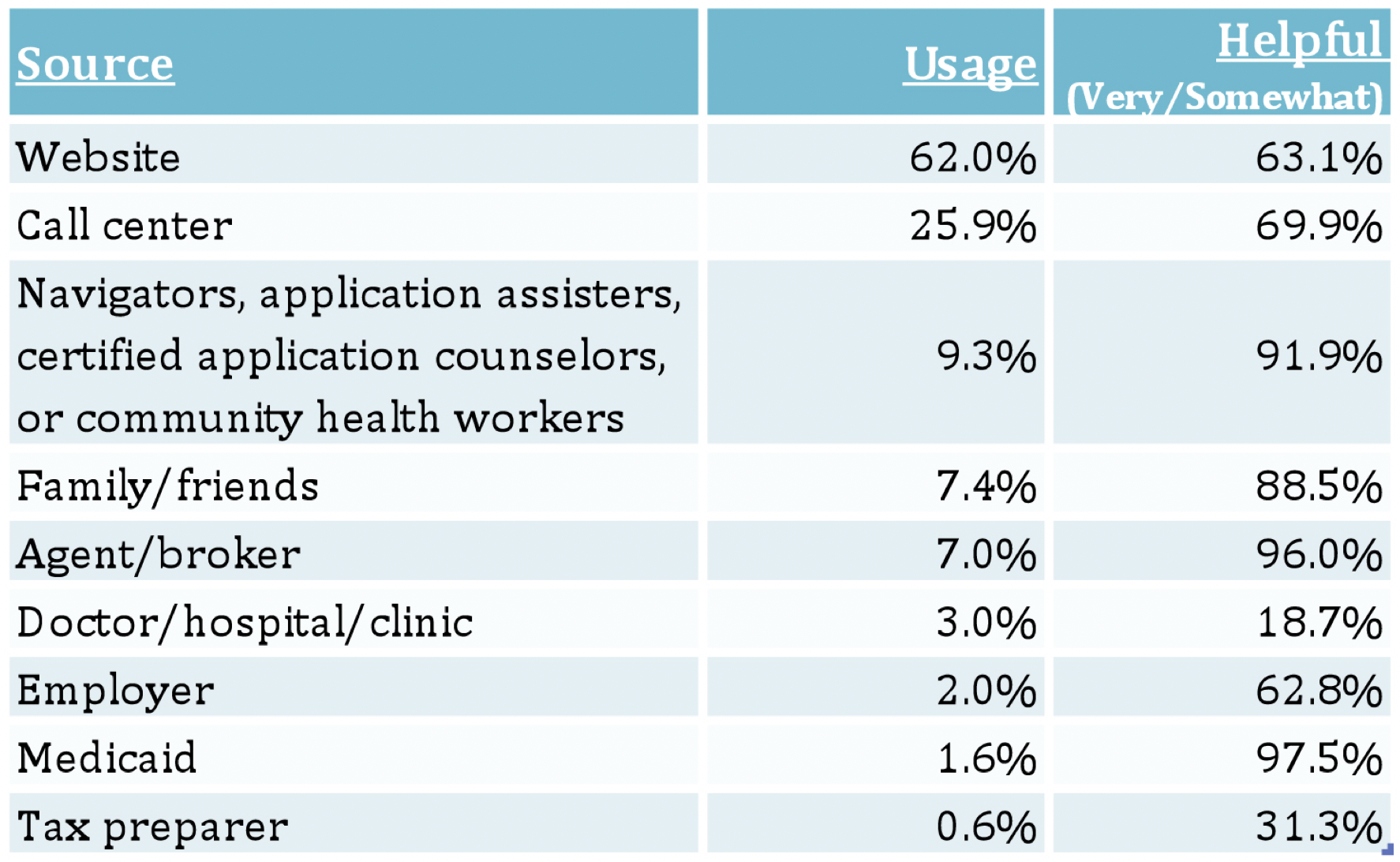
Table 2 — Sources of Marketplace Information Used by Texans, March 2014*
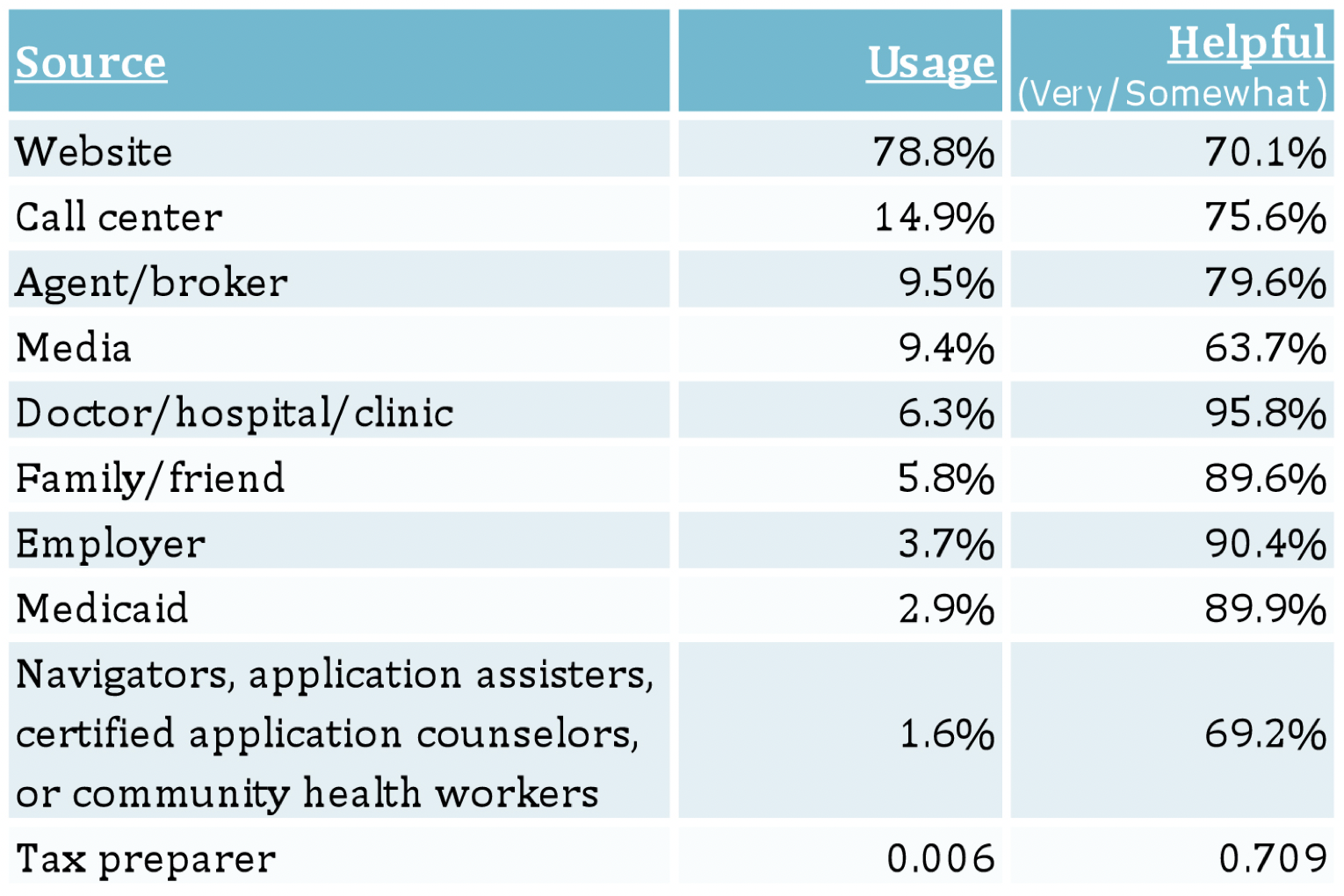
The information from Texas’ June HRMS survey indicating that more people found interpersonal enrollment methods more helpful is corroborated by the national HRMS June 2014 survey which found that those persons who were assisted by enrollment professionals were more likely to enroll in coverage. Knowing which methods were most helpful and successful in getting people to enroll in coverage in 2013-2014 is important to inform outreach and marketing efforts for the second ACA enrollment period.
ACA Enrollment Methods Each Offer Unique Benefits and Challenges.
Table 3 shows how easy or difficult various steps in the enrollment process were for people using the website, call center and navigators. When Texans were asked about the process of applying for and enrolling in coverage and how easy or difficult the steps were, those who used the website and the call center reported similar experiences. Most found that comparing plans and out of pocket costs and understanding the application process were relatively easy tasks.
Texans who enrolled or were in the process of enrolling in the marketplace experienced more difficulty in creating an account with healthcare.gov. This may be the result of the early difficulties in the operations of healthcare.gov which caused many people to spend excessive amounts of time trying to create an account. Those in charge of the website say that it has been upgraded for the next enrollment period. Because the creation of an account is the first step toward purchasing a plan, whether a person is using the website or working with the assistance of the call center or a navigator, it is very important that this step be easy to accomplish.
Many Texans found it difficult to determine whether they were subsidy-eligible. This is an important step as well because the cost of a plan depends on the amount of subsidy available. Without that information, consumers cannot make informed decisions. We know from previous HRMS briefs that many who were subsidy-eligible did not purchase plans, and the inability to understand their eligibility may have contributed to their non-enrollment.
Health insurance premiums increase as the metal level increases. For example, the cheapest bronze plan for a 50-year-old in the Dallas Fort Worth area is $260 per month, while the cheapest gold plan costs $453. Premiums for plans for 50 year olds are approximately 57 percent more expensive than for 30 year olds, reflecting the greater health care utilization of older individuals.
Table 3 — People Who Said Process Was Somewhat or Very Easy.
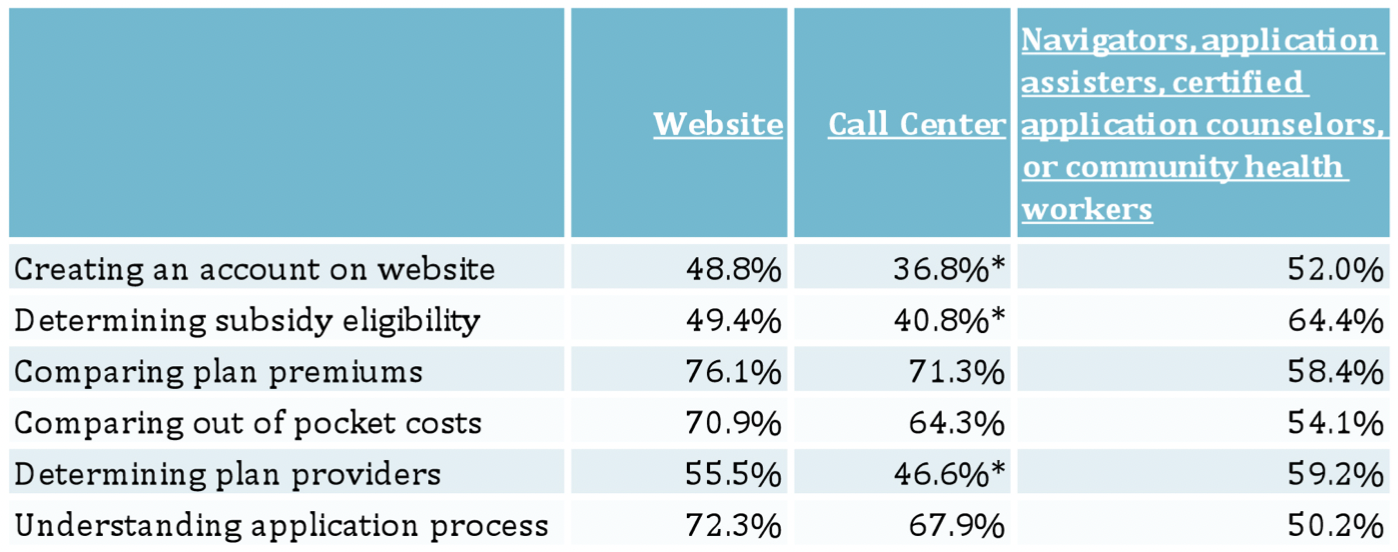
Texans Using the Website, Call Center and/or Navigators Say That Information About Eligibility and Trained, Available Staff Will Help Improve ACA Information and Enrollment Tools.
Tables 4, 5 and 6 contain Texans’ ideas about ways to improve the Marketplace experience through the website, call center and navigator programs. Website users’ primary suggestion was for the site to provide better information to determine subsidy eligibility. (Table 4). Throughout the first enrollment period, survey respondents have said that the costs of coverage were a barrier, even for those people who were eligible for subsidies. If clearer eligibility and financial assistance information had been available, more people might have enrolled in coverage. For those using the call center, two-thirds recommended shorter wait times. (Table 5). The chief recommendation made by 70% of survey respondents to improve personal assistance with enrollment was to increase the number of people available to help (Table 6). Generally, Texans were pleased with navigators, although relatively few used them, perhaps due to availability. The state of Texas imposed restrictions on navigators that likely decreased the number available for consumer assistance. Sources indicate that there were only approximately 400 navigators available to enroll the millions of subsidy-eligible uninsured adults in Texas.
Table 4 — Ways to Improve the Marketplace Website
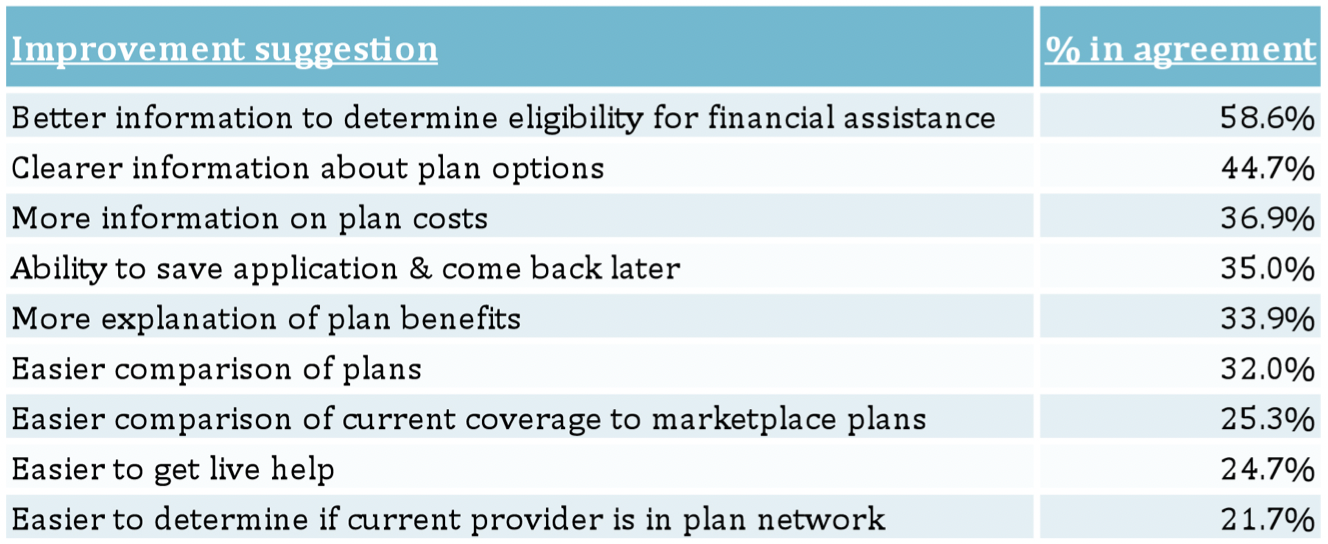
Table 5 — Ways to Improve the Marketplace Call Center

Table 6 — Ways to Improve the Marketplace Navigators, Application Assisters, Certified Application Counselors, or Community Health Workers
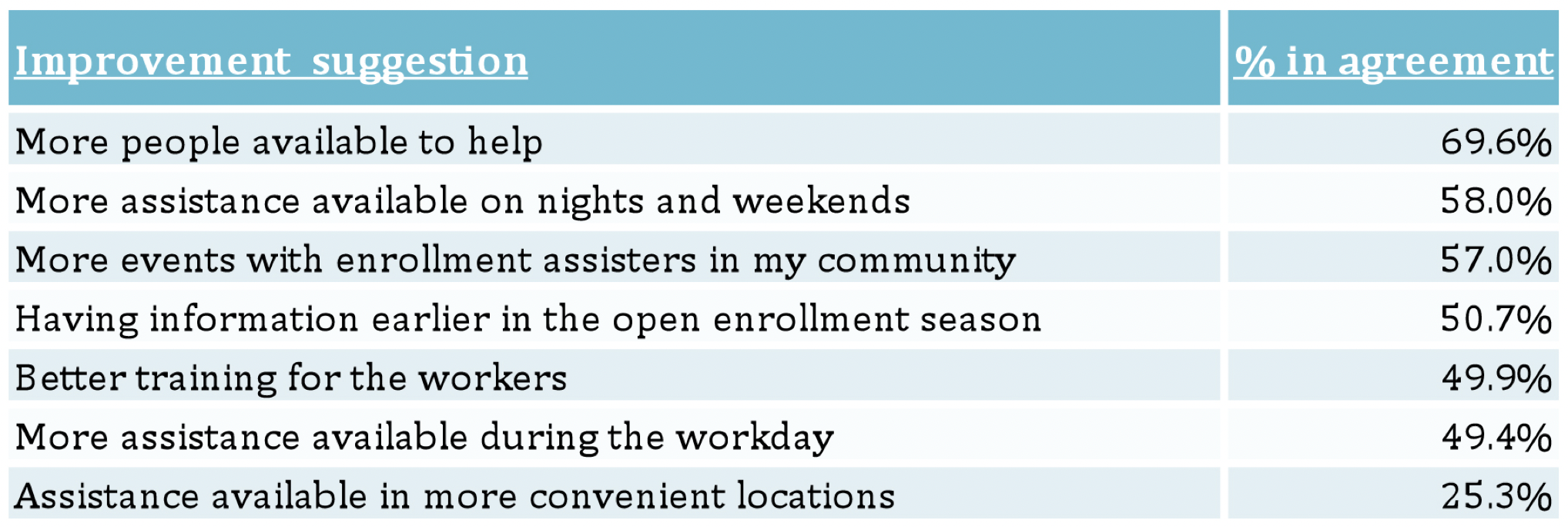
Looking Forward
We look forward to revisiting these issues after the second open enrollment period. The information above provided by Texans who engaged in the Marketplace in late 2013 and early 2014 should help those working to enroll additional uninsured Texans beginning next month.
Methodology
Each quarter’s HRMS sample of nonelderly adults is drawn from active KnowledgePanel® members to be representative of the US population. In the first quarter of 2013, the HRMS provided an analysis sample of about 3,000 nonelderly (age 18–64) adults. After that, the HRMS sample was expanded to provide analysis samples of roughly 7,500 nonelderly adults, with oversamples added to better track low-income adults and adults in selected state groups based on (1) the potential for gains in insurance coverage in the state under the ACA (as estimated by the Urban Institute’s microsimulation model) and (2) states of specific interest to the HRMS funders.
Although fresh samples are drawn each quarter, the same individuals may be selected for different rounds of the survey. Because each panel member has a unique identifier, it is possible to control for the overlap in samples across quarters.
For surveys based on Internet panels, the overall response rate incorporates the survey completion rate as well as the rates of panel recruitment and panel participation over time. The American Association for Public Opinion Research (AAPOR) cumulative response rate for the HRMS is the product of the panel household recruitment rate, the panel household profile rate, and the HRMS completion rate—roughly 5 percent each quarter.
While low, this response rate does not necessarily imply inaccurate estimates; a survey with a low response rate can still be representative of the sample population, although the risk of nonresponse bias is, of course, higher.
All tabulations from the HRMS are based on weighted estimates. The HRMS weights reflect the probability of sample selection from the KnowledgePanel® and post-stratification to the characteristics of nonelderly adults and children in the United States based on benchmarks from the Current Population Survey and the Pew Hispanic Center Survey. Because the KnowledgePanel® collects in-depth information on panel members, the post-stratification weights can be based on a rich set of measures, including gender, age, race/ethnicity, education, household income, homeownership, Internet access, primary language (English/Spanish), residence in a metropolitan area, and region. Given the many potential sources of bias in survey data in general, and in data from Internet-based surveys in particular, the survey weights for the HRMS likely reduce, but do not eliminate, potential biases.
The design effect for the Texas data in June 2014 is 2.6198 and the MOE is +/- 4.3. The survey fielded from June 3-26.


